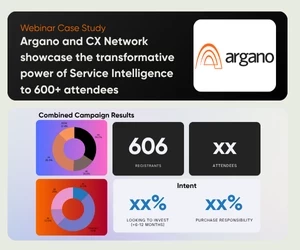Blending small and big data to achieve tremendous results
Customer data and analytics strategies that can propel businesses to a new level
Add bookmarkIn this week’s podcast Seth Adler is joined by Tuula Heikkinen, Vice President, Customer Channels at Telia Finland and James Alexander, Decisioning Director at Sky.
They examine how, with the right strategies, data can propel businesses to another level, serve excellent customer care and make employee workflow more seamless. Here we take a sneak peek at the points covered in their podcast.
Start by understanding what you’re using customer data for
Trying to predict trends based on generalised or automated data can become overly complicated. Tula maintains that to build a productive analytics environment it is important to have a clear definition of your intentions from the outset. Project managers should assess use cases and pinpoint the customer challenge or business challenge they want to overcome. She adds: “You must ask yourself, ‘what is the data set we actually need for this problem?’ Only then, can you build analytics around that.”
For the best results, it is important to be objective with trend analysis, rather than attempting to retrospectively justify decisions. Tula explains that; “Sometimes somebody has already decided where to put the money and is looking for proof in the data to confirm their decision. There’s plenty of data, and points of views, so you can do it, but you have to be objective and sceptical enough to question, ‘is that really true?’”
How to apply big and small data in a business
Many businesses are now deploying a hybrid approach to make business decisions on a daily basis.
“Big data is unstructured, and small data is more customised,” says Tula. “We handle the data in different databases with different tools and skills, but when we need to get practical, we connect those points with small data. There is no clear line of when we move from one section to another, it happens intuitively.”
Personalised customer interaction
Approaching and interacting with customers with anonymity is no longer good enough. James explains, at Sky there is a focus on ‘actionable customer profiles’ - a collection of all the useful bits of data that can produce model scores. This small data associated with a customer is used to inform company processes - which gives the customer a better experience.
He adds: “We learned, very carefully, whether the data was good enough to know definitively what was wrong with the customer in a given situation, opposed to just inferring that they were slightly more likely to buy something, or more likely to have a customer service issue. Some of the places we really saw it take effect were super simple… It wasn’t even a case of [using] machine learning or artificial intelligence.”
This small data strategy will also highlight the most appropriate customer channel. “To me, small data is knowing what’s going on with a customer, connecting and automating at different touch points, and again, finding them in whatever channel is appropriate to them, but doing it at scale. That way, they come out with an amazing experience where they no longer have a problem,” says James.
Beating data silos
Digital expectations from customers are now pushing companies to function in a more mature, holistic manner. “In the last 15 years,” James explains, “different departments have been able to operate in silos, not really having to talk to each other. Suddenly, the data and the customer experience cuts across that - but it’s not just tech, its commercial, trading, and marketing. Now, people are having to change their processes to become customer centric. But it’s just change, and people who are flexible and understand those collections of capabilities are crucial in being able to bring all that together.”
Listen below to hear the podcast in full and discover the real-world examples of how big and small data has affected these companies:




























